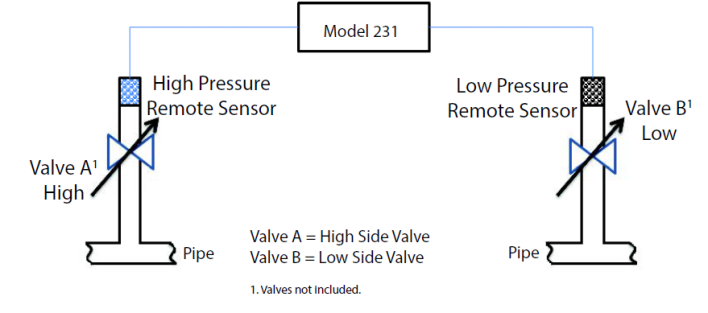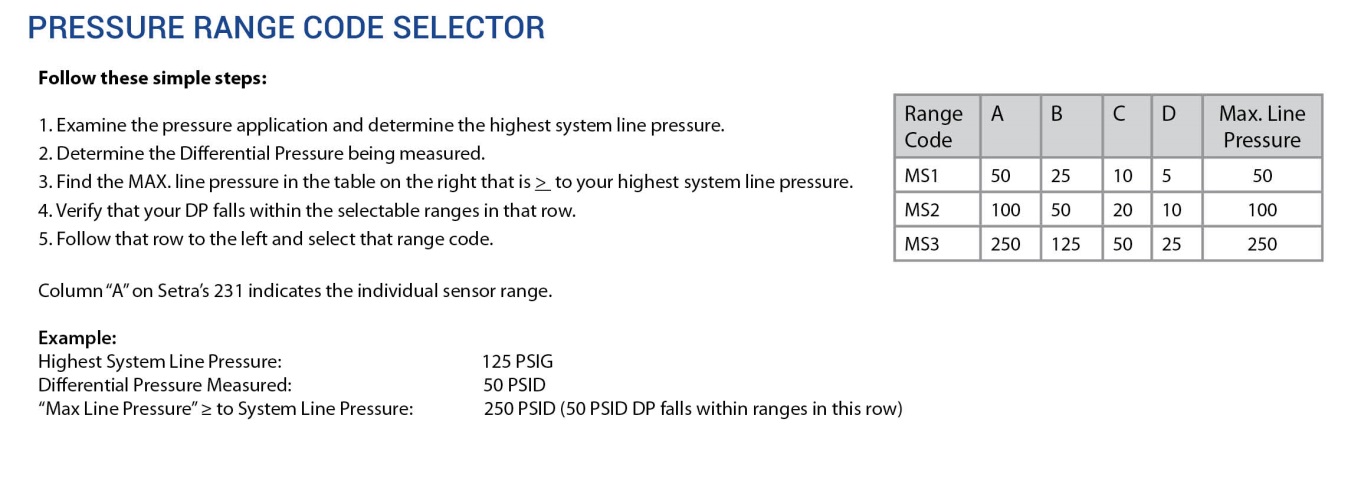After understanding the difference between wet-to-wet, wet-to-dry and dry-to-dry differential pressure transducers, it is time to learn about the different types of sensors designed to measure wet-to-wet differential pressure. Wet-to-wet differential pressure sensors are broken into two main categories, true wet-to-wet differential pressure and calculated wet-to-wet differential pressure.
True Wet-to-Wet
True wet-to-wet differential pressure transducers,for example Setra's Model 230, contain a single diaphragm that separates the two pressure ports and directly measures pressure from both the high and low pressure side of the process. Many true wet-to-wet transducers offer both unidirectional and bidirectional pressure ranges. Some advantages of the true wet-to-wet transducer over the calculated wet-to-wet transducer include a higher accuracy reading, and a simple transducer selection. The only consideration for selecting the transducer, is confirming that the line pressure stays within the maximum operating range of the sensor. From there, you only need to select the differential pressure range needed for measurement.
Applications: idealized pressure tank level applications, process control systems, flow measurement of various gases or liquids, liquid level measurement or pressurized vessels, pressure drop across filters
Calculated Wet-to-Wet
Calculated wet-to-wet differential pressure
trans ducers, for example Setra's Model 231, consist of two, gauge pressure sensors connected directly to the pipe with one measuring the high pressure side and the other measuring the low. Most calculated wet-to-wet sensors offer multi-range measuring capability up to 250 PSID. One disadvantage of the calculated wet-to-wet transducer is that users must be aware of the highest system line pressure to select the differential pressure sensor range (Figure 1). If the selected range is not sized properly, the sensor will reach its limit prior to the unit being able to calculate the differential pressure (see example below).
ducers, for example Setra's Model 231, consist of two, gauge pressure sensors connected directly to the pipe with one measuring the high pressure side and the other measuring the low. Most calculated wet-to-wet sensors offer multi-range measuring capability up to 250 PSID. One disadvantage of the calculated wet-to-wet transducer is that users must be aware of the highest system line pressure to select the differential pressure sensor range (Figure 1). If the selected range is not sized properly, the sensor will reach its limit prior to the unit being able to calculate the differential pressure (see example below).

Applications: chillers, pump supply and return, process control systems, flow measurement of various gases or liquids, liquid level measurement of pressurized vessels, pressure drop across filters energy management systems, process control systems, flow measurement of various gases or liquids, liquid level measurement of pressurized vessels, pressure drop across filters
CLICK HERE to learn about the three types of differential pressure transducers.


